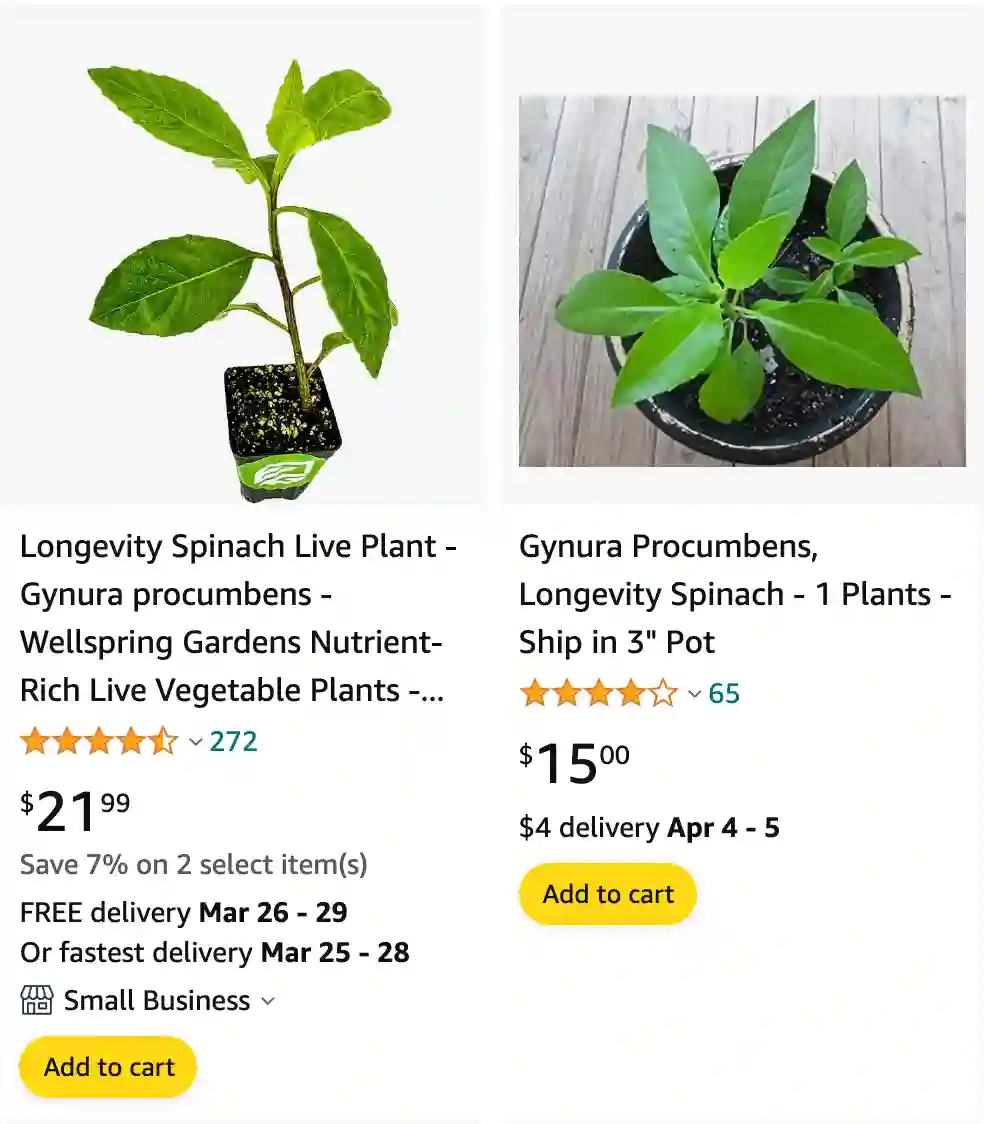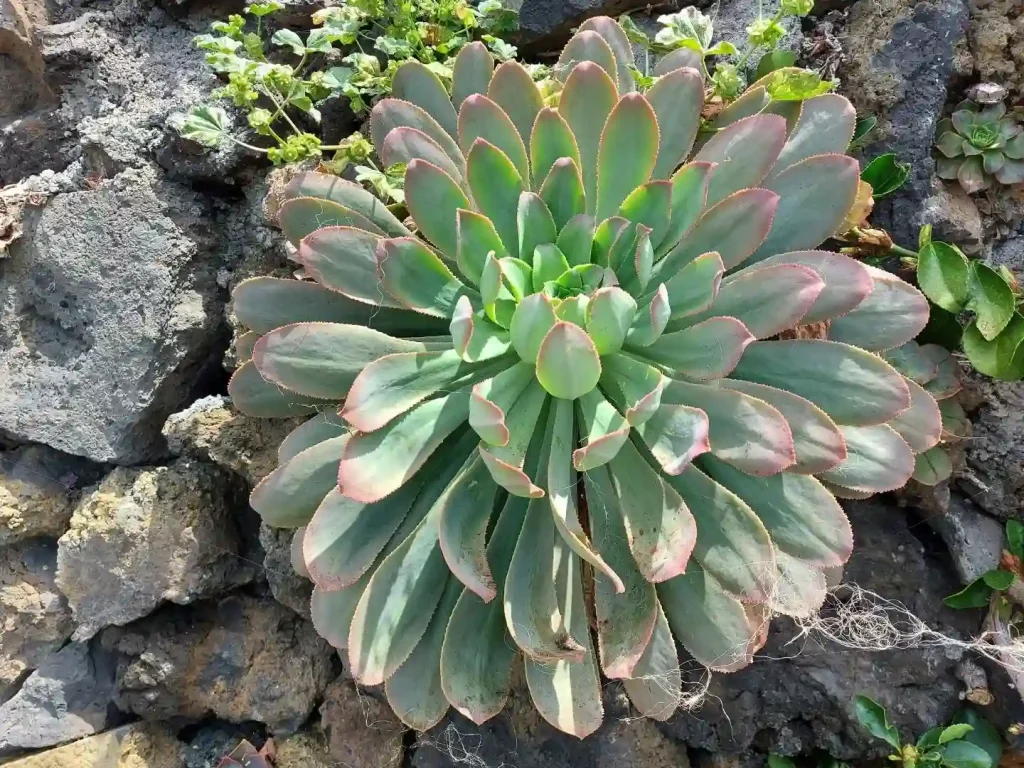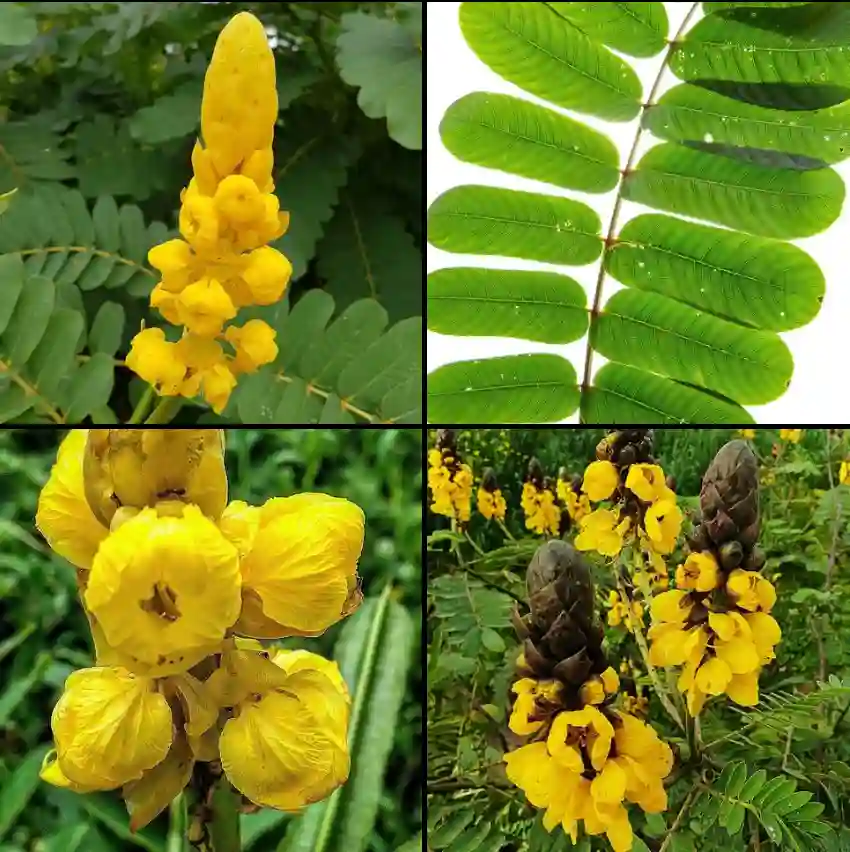
What is Gynura procumbens?
Gynura procumbens, also known as “Longevity Spinach” or “Sambung Nyawa,” is a perennial herb native to Southeast Asia. It is valued for its edible leaves and medicinal properties, traditionally used in folk medicine for its potential health benefits, including anti-inflammatory, anti-diabetic, and antihypertensive effects.
55 Species in Genus Gynura
Gynura Procumbens vs Ashitaba
I’ve found Gynura Procumbens more striking with its purple undersides, adding a nice contrast to my indoor garden. Ashitaba, on the other hand, has been impressive for its resilience and health benefits, but I prefer Gynura Procumbens for its unique appearance.
How to eat Gynura procumbens?
Gynura procumbens can be eaten raw or cooked. The fresh leaves can be added to salads, smoothies, or sandwiches. They can also be sautéed, steamed, or added to soups and stir-fries. The leaves have a mild, slightly bitter taste that pairs well with a variety of dishes.
How to grow Gynura procumbens?
Here’s a guide to cultivate it successfully:
Planting:
- Seeds or Cuttings: You can grow Gynura procumbens from seeds or cuttings.
- Seeds: Sow seeds indoors 6-8 weeks before the last frost. Use a well-draining seed starting mix and keep the soil moist but not soggy. Seedlings should emerge in 1-2 weeks. Once they have a few sets of true leaves, transplant them to individual pots or your desired outdoor location.
- Cuttings: Take stem cuttings from a mature Gynura plant during spring or summer. Choose healthy, non-flowering stems with at least a few nodes. Remove the lower leaves and dip the cut end in rooting hormone (optional). Plant the cuttings in a well-draining potting mix and keep the soil moist. New growth should appear in a few weeks.
Location:
- Sunlight: Gynura procumbens prefers full sun to partial shade. Aim for at least 4-6 hours of direct sunlight daily. In very hot climates, some afternoon shade can be beneficial.
- Soil: Well-draining soil is crucial. You can use a standard potting mix with added perlite or orchid bark, or a sandy loam mix.
Care:
- Watering: Water regularly, allowing the top inch of soil to dry out slightly between waterings. Overwatering can lead to root rot.
- Fertilizing: During the growing season (spring and summer), you can fertilize your Gynura procumbens once a month with a balanced liquid fertilizer diluted to half strength. Avoid overfertilizing.
- Temperature: Warm temperatures between 65-80 degrees Fahrenheit (18-27 degrees Celsius) are ideal. Protect your plant from frost and cold drafts.
Pruning:
- Regular pruning is beneficial for Gynura procumbens. It encourages bushier growth and promotes new leaf production. You can pinch back leggy stems or harvest leaves for culinary use.
Pests and Diseases:
- Gynura procumbens is generally resistant to pests and diseases. However, watch out for common houseplant pests like mealybugs or spider mites. Neem oil solution can be used for control.
Additional Tips:
- Gynura procumbens can be grown outdoors in frost-free climates or as a houseplant in colder regions.
- If grown as a houseplant, rotate the pot regularly for even growth.
- The young leaves are edible and can be used in salads or stir-fries.
- Gynura procumbens is relatively fast-growing, so you may need to repot it every 1-2 years.
By following these steps, you can enjoy the vibrant foliage and unique characteristics of Gynura procumbens in your garden or home!
Where to buy Gynura procumbens?
Gynura procumbens can be purchased from specialty plant nurseries, garden centers, and online retailers. It’s often available through websites that specialize in medicinal plants or rare herbs. Ensure the source is reputable to receive a healthy plant.
How to propagate Gynura procumbens?
Gynura procumbens is easily propagated through stem cuttings. Cut a healthy stem with several leaves from the parent plant. Remove the lower leaves and place the cutting in water or directly into moist, well-draining soil. If using water, wait until roots develop, then transplant into soil. Keep the cuttings in a warm, humid environment with indirect light until established.
Is Ashitaba and Gynura procumbens the same?
No, Ashitaba (Angelica keiskei) and Gynura procumbens are not the same. They are different plants with distinct characteristics and uses. Ashitaba is known for its edible leaves and yellow sap, which is said to have various health benefits. Gynura procumbens is also valued for its medicinal properties but belongs to a different botanical family and has a different appearance and growth habit.
What is the use of Gynura procumbens?
Gynura procumbens is used both as a culinary and medicinal herb. The leaves are edible and can be incorporated into various dishes. Medicinally, it is used in traditional medicine for its potential health benefits, such as lowering blood pressure, reducing cholesterol levels, and managing diabetes. It is also believed to have anti-inflammatory, antioxidant, and antimicrobial properties, making it a popular choice for promoting overall health and well-being.
If i die, water my plants!



